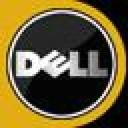Yahoo Answers is shutting down on May 4th, 2021 (Eastern Time) and beginning April 20th, 2021 (Eastern Time) the Yahoo Answers website will be in read-only mode. There will be no changes to other Yahoo properties or services, or your Yahoo account. You can find more information about the Yahoo Answers shutdown and how to download your data on this help page.
Trending News
how can I find out if I have a spyware program on my computer?
I have a dell laptop and have no idea where to look if I don't have one how do I get a free program.
5 Answers
- ?Lv 47 years ago
Here are some signs that your computer might be infected with spyware:
You notice new toolbars, links, or favorites that you didn't intentionally add to your web browser.
Your home page, mouse pointer, or search program changes unexpectedly.
You type the address of a specific website into your web browser, but you're taken to a completely unrelated website.
You see pop-up ads, even if your computer isn't connected to the Internet.
Your computer suddenly starts running slowly. Not all computer performance problems are caused by spyware, but spyware can cause a noticeable change.
- ?Lv 57 years ago
Most spyware does not pose and show any obvious symptoms on the computer but some of the most common traits or behaviour of a spyware are:
1. Slow computer performance
2. Slow internet connection
3. Suspicious programs running in the background - some of them will appear in the system tray or in the Task Manager (Process/Service tab)
But other very good spyware do not show these symptoms until you scan your computer using rootkit utilities such as Trend Micro Rootkitbuster, Kaspersky TDSS Killer, or Bitdefender Rootkit Remover.
Some of them may not even show rootkit features and they are just regular programs. So it is advisable that you regularly check installed programs on your computer.
- Dell Inc.Lv 77 years ago
Hello lennie,
My name is Sandeep and I work for the Social Media and Community Team at Dell.
Firstly the system slows down, the applications stop responding. There will be a error message on the system if there is any application installation in progress. Internet explorer will have all the unwanted tabs and links and pop-ups. Please ensure that your anti-virus program is up-to-date, this will stop all the unwanted threats from hitting the system.
Alternatively you can run a program called super anti spyware. This program can be installed from the internet install the trial version and run a complete scan and this would help you identify if there is a spyware on the system. Please revert for any clarification and we'll be happy to help.
Thanks,
Sandeep
Social Media and Community Professional
Order Status: http://dell.to/1fgKSTr
Download Drivers: http://dell.to/1hcxG98
- 7 years ago
you cant that's the trick,,.listen don't go to unprotected sites........dont do anything personal on your pc while connected to the internet(like uploading your pic) use this (system registry mechanic) dont install fake _copy of games(100% spywere on these stuff) and you will be fine
- How do you think about the answers? You can sign in to vote the answer.
- tumbleweed_biffLv 77 years ago
To remove Adware/Spyware you should do the following:
Run the free version of two of the following: Spybot Search & Destroy, Adaware anti-spy, SuperAntiSpyware, AdwCleaner.
Next install and run malwarebytes free version.
Now, run one of the following:
CCleaner, Glary Utilities, Tweakingl.com Windows All In One tool.
If you have spyware there is a good chance of having things which are more malicious and pernicious. You should do the following as soon as you can:
The most reliable way of removing malware: by Tumbleweed_Biff@yahoo.com
The best way to remove viruses from your computer is to boot from something other that your hard
disk. Fortunately, most AV producers provide what is called a Rescue Disk. This is a boot-able CD/DVD or flash drive. On a *clean* computer, download at least one of these programs, preferably two of them. (No AV program gets everything but not many can get past two reputable scanners.) Make the boot-able disk or flash drive, boot the computer with it. Now this image was made a while ago so you will want to update after you boot. Once it has updated set it to work scanning your computer. See the explanation of why this is the case below.
Separate from the others I will offer to you is Kaspersky's TDSSKiller. Not an actual Rescue Disk by itself, it is at the very top of the list of root-kit finders/eliminators. You should run this in addition to at least one of the others:
http://usa.kaspersky.com/downloads/TDSSKiller
Here are 4 of the many free Rescue Disks available:
http://support.kaspersky.com/us/viruses/rescuedisk...
http://www.bitdefender.com/support/how-to-create-a...
https://www.zonealarm.com/forums/showthread.php/72...
http://www.lavasoft.com/mylavasoft/support/support...
One of the most difficult things about viruses is once you get one it is difficult to be sure you got rid of all of it/them. Resident programs are pretty effective at blocking initial infection if kept updated, but not so good at removing all of the viruses, especially the worst ones – root-kits.
Think of the entire computer with all the software as a walled city with one outer wall – the rest of the world outside, the computer and the software inside – and then a series of inner walls with fewer and fewer people allowed within the next layer towards the castle in the middle. It is the center wall within which all the power of the kingdom resides. On a computer, in the middle, we have the kernel or heart of the operating system which talks directly with the hardware such as the CPU, motherboard, RAM, etc. Anything that wants to access any of the computer's hardware must go through the OS to get there. In the layers going out, each layer has increasingly less security to go through (and less authority) so that on the very outside where the applications are, there isn't a lot of security or authority to change things on the computer.
Most viruses operate in the outer layers which makes it relatively simple to find, identify and remove. Malware performs various tricks in order to get access to the inner layers. There are, however, some viruses which manage to get access to the kernel level. These are called “Root Kit” viruses. Root is a reference to the center layer. In the Linux and Unix world, a root user has the keys to the kingdom and full control of everything on the machine. With Windows, of course, we don't have a root, we have administrators who actually have a little less authority than Root on Linux/Unix.
The Root-Kits are able to get themselves launched at the same time as the kernel, sometimes as part of the kernel. This happens well before any security software on the machine is launched. As a result, these root-kits have time to hide themselves and even hide other viruses from the security systems/software of the computer. The only reliable way to find them is to perform a virus search before the virus launches which means before the Kernel of the OS launches. By using something other than your hard drive to boot from you have full access to everything on the machine and nothing has time to hide because they never launch.






